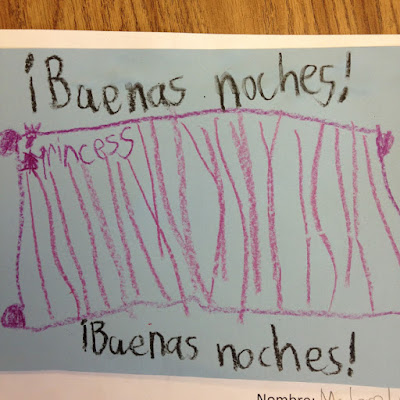Check out my blog post introducing the idea here.
And my other blog post where I reflect on why it went long.
This year I shortened it to the month of February. Why February? Because it's my least favorite time of the year, which means it's also the time of the year I'm most tired and cranky and least likely to be trying to stay in the target language (I definitely suffer from Seasonal Affective Disorder or SAD.)
Was it easy? No. Is it ever easy to get your students to stay in the TL? Is it ever easy to stay in the TL yourself? No, it's not. But it's always worth it. And the students responded well. I am pretty good at staying 90% myself and I use lots of other ways to motivate students to use the target language so it wasn't anything completely brand new or shocking to them but what it did do was keep ALL of us accountable and aware of when and how we were using English in Spanish class. Especially in the middle of winter when we needed extra accountability.
What did I notice between classes? I included 2nd-5th grade, which meant 16 classes battling it out. It was definitely a competition between several classes in second, third, and fourth grade. Fifth graders after winter break suffer from senioritis so I'm not surprised they didn't fare better. The biggest thing I noticed was that the classes that have I have classroom management problems with did a lot worse and the classes where classroom management is a breeze did much better. The class that won has a teacher whose class is my favorite every year (which speaks highly of her ability to create an atmosphere of learning and support for each other year after year.)
This pattern shows me that good classroom management is a MUST in order to create a culture where students are ok with hearing and using the TL nearly 100% of the time. I already knew which classes are a struggle but this showed me exactly why it's important for me to continue to practicing routines & finding engaging activities. Because without all the integral parts of classroom management they use the TL less!
What would I change for next year? I think the move from all year to just one month was perfect so I would not change that. But in the spirit of always improving, I think next year we can do some more reflection. I reflected after the students left but I want to lead the students in reflecting on when they use English, why, and what they can do to stay in the target language more. I want them to take charge of their own learning.
So I probably still used less target language in February than I normally do but more than I might have because I had students keeping me and themselves accountable. All in all it was a success. How do you encourage target language usage in your classroom? Share in the comments below or on Twitter using the hashtag #earlylang!









